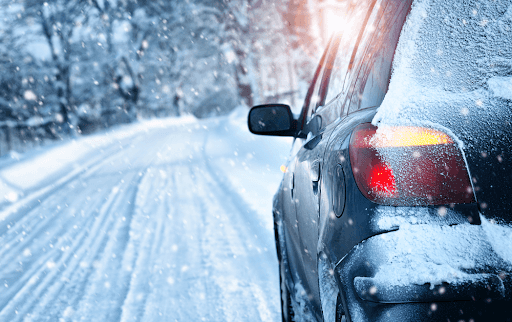Mar 1, 2023

Winter weather provides its own demands and while it’s not something we commonly see in central Arkansas, it does happen frequently enough that we should know our way around the pitfalls. And we all know that even though its March, thats no guarantee we won’t still see some winter weather this year. Not only does being aware of the challenges keep us safe, but it provides a safer environment for other motorists.
So let’s look at 5 tips for driving in winter weather because while it might be the end of February, we all know how unpredictable it can get here in central Arkansas.
-
-
- Slow Down. We know, we know this isn’t quite the fun you wanted to hear but it’s no secret that ice and snow are slippery! And we’re in a perfect climate where temperatures can rapidly cycle from below freezing to above freezing and back again. This makes for particularly sneaky little patches of ice where you might not suspect them.
It also helps low visibility conditions when it’s actively snowing or sleeting. - Check your roof! So you’ve come out to your car after it’s snowed or iced. You scrape off your windshield, hop in and drive off to work. All the while, snow and ice are flying off your roof and trunk lid all over the windshields of the cars behind you. That can be dangerous. Take an extra minute or two and scrape off your roof and trunk lid. Don’t use your ice scraper for this, though. The combination of harsh edges and cold temps can damage your paint. Instead, use something like a file folder, old pizza box or something similar.
- Be extra careful on bridges. We’re all familiar with the road signs that say “bridge may ice in cold weather” but this can be especially true when temperatures are right on the edge of freezing. Warmer ground temps can keep most pavement clear of ice but freezing air blowing around underneath bridges could cause them to freeze well before ice forms anywhere else. It also means they’ll defrost later than other parts of the highway.
- Give your car some time to warm up. Freezing temps can cause havoc with your belts and fluids. Cranking up the engine and immediately hitting the highway isn’t a great idea. Give yourself some extra time in the morning to start your car and let it idle for a few minutes before you go tearing off down the road.
- Check your tires for two things. The first, and hopefully most obvious, is proper tread depth. Driving through layers of snow, sleet and ice mush is much less dangerous if you have proper tread depth on your tires. But much less obvious is the air pressure. Colder temps mean denser air, which means less air pressure in your tires. But then that air in your tires heats up as you drive, causing rapid fluctuations in air pressure which can cause damage to your tires over time. So once the temps drop, check your air pressure and you might find you need to hit the air pumps.
By keeping a few basics in mind, we can make winter weather driving much safer for ourselves and others!
- Slow Down. We know, we know this isn’t quite the fun you wanted to hear but it’s no secret that ice and snow are slippery! And we’re in a perfect climate where temperatures can rapidly cycle from below freezing to above freezing and back again. This makes for particularly sneaky little patches of ice where you might not suspect them.
-





